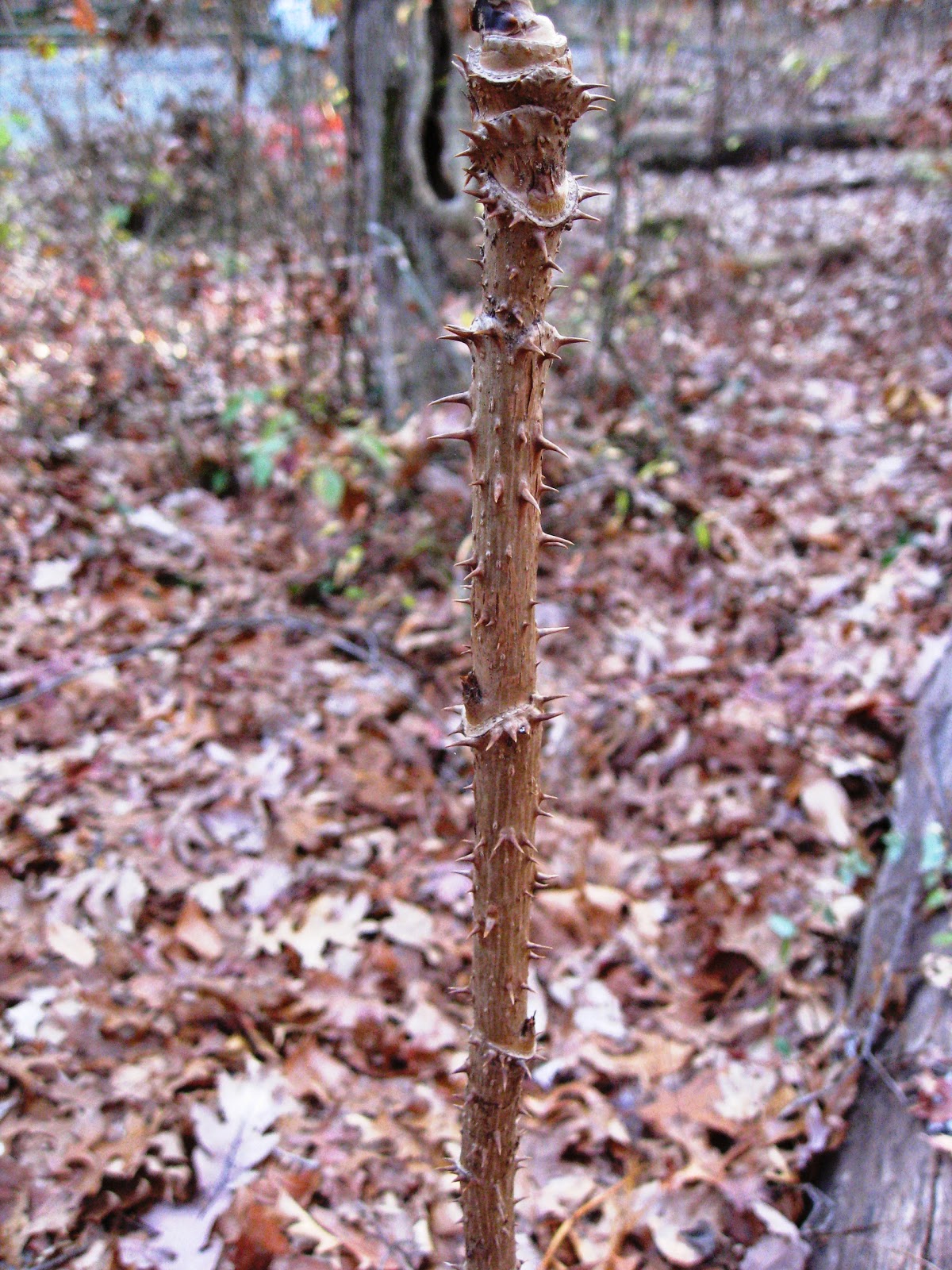 |
| Witch Hazel in bloom |
Witch Hazel (
Hamamelis virginiana) is a very common shrub in our region that is often overlooked. However, it has some interesting natural history and folklore associated with it. It also is calling attention to itself as one of the only woody plants to be in bloom this time of year. Each slightly aromatic flower consists of 4 slender twisted yellow petals which are often in bloom as its leaves change color or have even already dropped for the Fall. It is usually the last shrub to bloom, giving it one of its alternate names of "Winterbloom."
Since there are few pollinators available so late in the season, the flowers can self-pollinate and are not picky as to which pollinators make use of them. Often they are gnats or Noctuid moths, but quite a few other pollinators have been noted. Each individual flower also lasts quite a long time giving potential pollinators ample time to find them.
 |
| Witch Hazel in Fall color. |
Witch Hazel can reach 30' in height, but rarely does so. It is usually an understory shrub, twisted in form. The seeds take a year to mature, with last years seed pods often still unopened next to the following year's blossoms. It has an interesting seed dispersal mechanism, popping audibly and shooting the dark seeds up to 30' feet away. This has led to such additional common names as Snapping Alder or Snapping Hazel. Once the seeds have been expelled, they commonly take two years to then germinate.
 |
| Winterbloom flowers with seed pods. |
Although many magical qualities are associated with this plant, its common name of Witch Hazel is actually derived for different reasons. The "witch" part comes from an older English word "wych" meaning "bendable" or "bending." It looked similar enough to the European Wych Elm that the name was applied to the New World plants. This was later corrupted to "witch" but possibly because so many magical properties were also attributed to it.
 |
| Popped seed pods and seeds. The seeds are supposed to be edible, but only as an ill-tasting starvation food. |
Folklore would have you believe that forked branches of Witch Hazel can be used to detect a variety of things. "Rhabdomancers" preferred using this plant to all others to find underground water sources. Some people still believe the forked and bendable Witch Hazel can be used for dowsing or "water witching." In the past, the shrub was used to supposedly find coal, tin, copper, and even detect witches.
But the indigenous people had been using Witch Hazel well before European settlers attributed such powers to it. According to ethnobotanist Daniel Moerman, the Cherokee used an infusion from the bark to treat pains, colds, sores, scratches, fevers, sore throats, tuberculosis, or simply as a tea for good health. The Chippewa used it as a skin lotion and eye wash, along with using it to induce vomiting in case of poisoning. The Iroquois made a poultice from the twigs to treat colds, arthritis, coughing, heart issues, bruises, and to treat falls to pregnant women. Parts were also used by them to treat dysentery, asthma, heart problems, cholera, kidney ailments, lung troubles, tooth aches, venereal diseases, and as an appetite stimulant.
This plant panacea was also used for less medicinal practices. The seeds were used by the Menominee to make sacred beads and as an augury to predict if the sick would recover. They also used Witch Hazel to make a sports liniment to be rubbed on legs during sports. The Mohegan thought that two crossed sticks of this plant could be used to find underground water or buried treasure (in addition to using it as a lotion for cuts, bruises and insect bites). The Potawatomi used it in their sweat baths and to treat sore muscles.
During the Civil War, Confederate doctor Francis Porcher was ordered to come up with alternative medicines and goods no longer available due to Union blockades. He noted the Native American Indians using Witch Hazel as a bark wash for tumors, inflammations, swellings, hemorrhoids, and eye afflictions which could be duplicated in the South. A tea made from the leaves he thought could be used to treat violent vomiting and ease child birth pains. He also expressed the wonderful properties of this plant as divining rods and detecting water.
Witch Hazel can still be found in many over-the-counter medicines and treatments to this day. Its astringent qualities are used in many healthcare products. Modern uses still include treating sores, bruises, insect bites, psoriasis, poison ivy, swelling, varicose veins, and hemorrhoids.
 |
| A Witch Hat Gall caused by the aphid Hormaphis hamemelidis. |
Wildlife of course make use of Witch Hazel. Sixty-three species of caterpillars have been found to feed on it. One of the more interesting insects to make use of it is an aphid called Hormaphis hamamelidis. It normally spends part of its life cycle on birch trees, but is most noticeable on Witch Hazel. The aphid forms a cone-shaped gall growth on the leaves and lives inside. They are often referred to as as Witch Hat Galls due to their appearance.
Such a bewitching plant with so many interesting qualities attributed to it, seems fitting it calls attention to itself around Halloween.





















